AI in Robotics
Introduction
Robots that can handle complex tasks as effortlessly as humans are no longer just a vision of the future. Thanks to artificial intelligence (AI) advancements, robotics is transforming various industries, from manufacturing to aerospace.
Reflecting this growth, the AI robotics market, which stood at USD 12 billion in 2022, is set to reach USD 15.04 billion in 2023. Looking further ahead, we’re seeing projections of a market size ballooning to USD 36.78 billion by 2030, and it doesn’t stop there – estimates suggest a staggering USD 83.78 billion by 2032. These figures aren’t just numbers; they’re a testament to AI’s enormous potential in robotics.
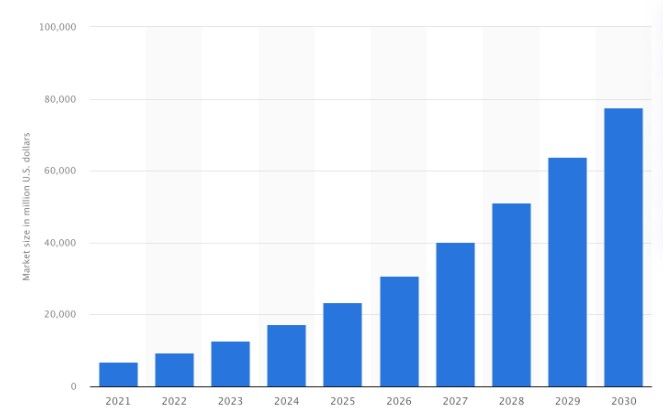
Even as the broader venture capital landscape experiences a slowdown, the robotics sector stands resilient and thriving. Investments continue to flow steadily, driving significant construction, agriculture, and healthcare advancements. The sector’s unwavering resilience and the promising growth potential are as impressive as they are evident.
In this article, we’ll explore AI in robotics, examining its various applications, benefits, and challenges and how AI reshapes industries and sets new technological standards.
The Role of AI in Robotics
Let’s start by understanding the role of AI in robotics. Artificial intelligence plays a pivotal role in shaping the capabilities and potential of robots. AI is the driving force behind various aspects that empower robots to perform tasks precisely and efficiently. In this section, we’ll explore how AI contributes to different dimensions of robotics, including vision, motion control, data analysis, and decision-making.
Enhancing Perception
Robots achieve human-like vision through AI abilities like image recognition and computer vision, which can pinpoint and interpret objects or scenarios from visual inputs. This machine vision, a blend of AI and camera technology, is essential for real-time visual data processing and is rapidly growing in market value. The global robotic vision market, including 2D and 3D technologies, is expected to grow from USD 2.6 billion in 2023 to USD 4.0 billion by 2028, at a CAGR of 9.1%. These systems, increasingly used in various industries for tasks like material handling, quality inspection, welding, and packaging, enhance efficiency and product quality.
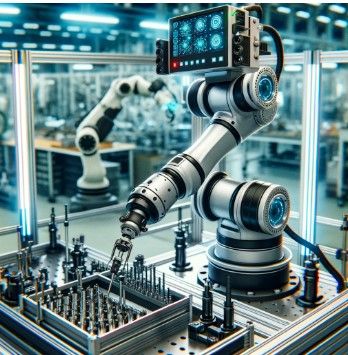
Deep learning, a branch of AI that draws inspiration from the human brain’s neural networks, is pivotal in imparting vision to robots. These networks process intricate visual information, allowing the robots to recognise patterns, distinguish objects, and learn from their environment. Central to this are computer vision algorithms like convolutional neural networks (CNNs), which are particularly adept at image recognition and processing, enabling robots to understand and interact with their visual world. Meanwhile, recurrent neural networks (RNNs) excel in understanding temporal or sequential data, which is key for tasks that require memory of past events, such as navigating through changing environments.
Robots develop an intricate understanding of depth and spatial relationships using these deep learning methods, which are vital for manoeuvring through and interacting with various environments. Such an understanding allows for precise placement, dexterous manipulation of objects, and safe navigation around obstacles. The fusion of these advanced AI techniques into robotic vision systems extends their functionality and adaptability, broadening their utility across many sectors, from autonomous vehicles navigating busy streets to robotic arms skillfully assembling intricate machinery.
AI is helping make significant strides not only in enhancing robots’ visual perception but also in improving their verbal perception by using Large Language Models (LLMs) and other generative AI solutions. These advanced technologies enable robots to not only comprehend but also intelligently respond to human commands and queries, effectively bridging the gap between human and machine communication. By achieving this harmonious integration of both visual and verbal perception with communication, AI-driven advancements open the door to another vital aspect of robotics: seamless movement.
Seamless Movement: AI-Driven Motion Control
Integrating AI into motion control enables seamless movement by improving the precision and fluidity of robotic movements. Robots can now perform tasks with an efficiency that rivals human dexterity.
AI algorithms enable trajectory planning such that robots can calculate optimal paths for movement while deftly avoiding obstacles. This is particularly critical in dynamic environments where conditions can change rapidly. AI techniques like reinforcement learning are used for exploring environments. This allows robots to adapt and learn from their surroundings. Consequently, their adaptability in complex situations is significantly enhanced. Generative AI methods are also used in advanced path planning. These methods enable robots to explore a broader range of options. They can craft flexible and adaptive navigation routes.
In parallel, AI contributes to predictive maintenance by analyzing sensor data and historical operations. This predictive capability enables robots to anticipate potential failures or maintenance requirements, ensuring uninterrupted peak efficiency with minimal downtime.
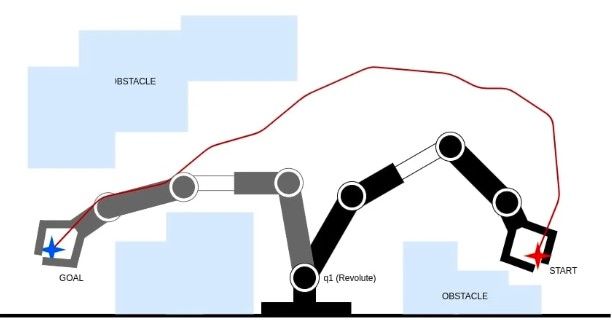
The ability of robots to interact with their environment and other machines in a collaborative setting is also improved through AI algorithms. These algorithms enable robots to synchronise their movements with fellow robots or adjust their actions in response to human movements. This fosters a collaborative workspace where robots and humans can work together seamlessly. This capability is crucial in creating a harmonious and efficient environment where robotic and human skills are utilised to their fullest potential.
AI-Powered Data Analysis & Decision Making
AI-driven data analysis is crucial in how robots manage and interpret information. These robotic systems come equipped with an extensive array of sensors that continuously gather data from their surroundings. This data includes a wide range of information, such as spatial data, environmental conditions, and object characteristics.
The seamless integration of AI algorithms truly amplifies the significance of this data. These algorithms serve as the central processing units of these robotic systems. They are akin to the intellectual core of the robot, enabling it to process and interpret incoming data in real time with remarkable efficiency.
GPU (Graphics Processing Unit) acceleration also plays a pivotal role in this process. By leveraging GPUs, these AI algorithms can process large volumes of data much faster than traditional CPUs. This acceleration is crucial for complex tasks such as image and pattern recognition, which are essential in dynamic environments.
Consider a scenario where a robot navigates a complex warehouse filled with shelves, objects, and dynamic elements. Thanks to AI, the robot doesn’t merely accumulate data; it actively engages with it. It performs real-time analysis of the sensory inputs, allowing it to identify intricate patterns, make predictive assessments, and adapt swiftly to evolving situations. This remarkable capability empowers the robot to anticipate potential developments and make intelligent decisions. In essence, AI doesn’t just enable data collection; it empowers the robot to transform this data into actionable insights.
Applications of AI-Enhanced Robotics
Next, let’s take a closer look at some key areas where AI-enhanced robotics are making a notable impact, from surgical precision in the medical field to enhanced automation in industrial settings.
Surgical Robots
AI-enhanced surgical robots in healthcare are a groundbreaking advancement. These robots bring unprecedented precision and accuracy to surgical procedures, significantly reducing the margin of error. They can perform complex operations with a level of consistency and precision that is challenging for human surgeons.
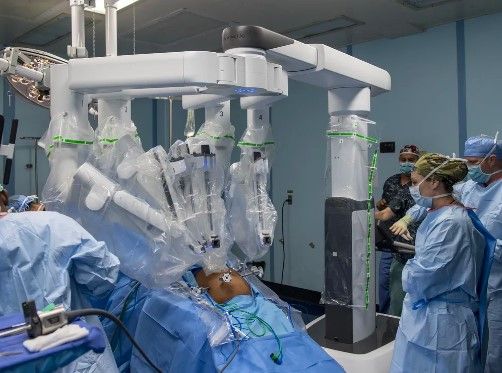
This technology prioritises patient safety and contributes to quicker recovery times and less invasive procedures. Examples include robots that assist in delicate surgeries such as neurosurgery or minimally invasive procedures, demonstrating a profound impact on the quality of healthcare.
Autonomous Mobile Robots
An autonomous mobile robot is designed to navigate and operate in its environment on its own, without needing external guidance or control. The application of AI in autonomous mobile robots has transformed their capabilities, enabling them to navigate complex and dynamic environments easily.
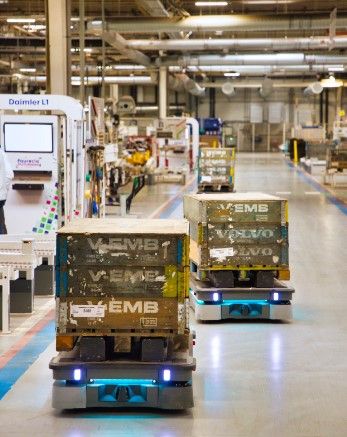
These robots are equipped to adapt to changes in their surroundings, making decisions in real-time to execute tasks efficiently. They find extensive use in various sectors, including logistics, where they streamline warehouse operations, and in customer service roles, where they can interact with customers in retail settings. The flexibility and adaptability of these robots, powered by AI, make them invaluable assets in numerous industries.
Industrial Robots
In the industrial sector, AI-enhanced robots are used to improve manufacturing processes. These robots, driven by AI algorithms, operate with enhanced efficiency, speed, and precision, significantly boosting productivity. They are not just limited to repetitive tasks; AI enables them to perform complex assembly, handle delicate materials, and adapt to changing manufacturing requirements.
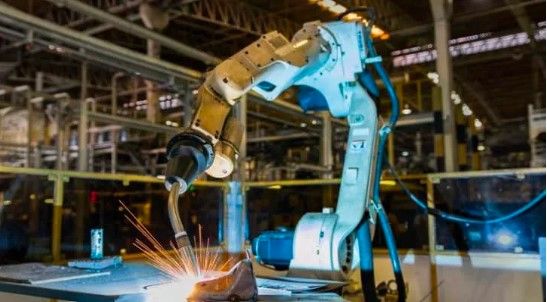
Moreover, these robots can collaborate with human workers, creating a synergistic environment where both strengths are utilised. Integrating AI in industrial robots is not just an innovation; it’s a fundamental shift in how manufacturing is approached, opening doors to new possibilities and higher production efficiency standards.
Drones
Drones, especially in swarm robotics, are a fascinating application of AI-enhanced robotics. Swarm robotics involves using multiple drones in coordination, akin to natural swarms like bees. These AI-equipped drones collaborate, achieving greater efficiency than a single drone.
Edge computing is crucial in this setup. It allows drones to process data on-site rather than sending it to a distant server. This reduces latency, enabling real-time decision-making, essential in dynamic scenarios.
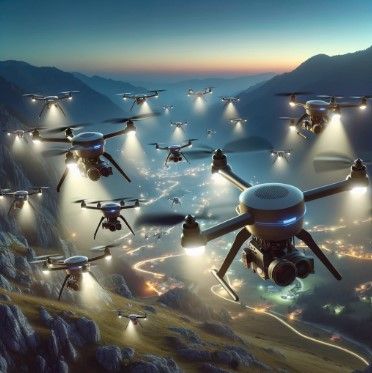
In applications like search and rescue, agriculture, or surveillance, drone swarms cover large areas, gathering and processing data on the fly. This approach lets each drone operate semi-independently within a coordinated group, adapting to changes like environmental shifts or task redistribution for greater efficiency.
Additionally, edge computing enhances data security and privacy, as it processes sensitive information locally on the drones. This synergy of AI, swarm robotics, and edge computing in drones marks a step towards intelligent, collaborative robotic systems for complex tasks.
Benefits
AI-powered robots are increasingly capable of performing complex tasks with high precision, significantly reducing human error and enhancing overall productivity. Additionally, AI in robotics contributes to safer working environments by taking over hazardous tasks, thus reducing workplace accidents and ensuring employee safety. The economic impact is also notable, as AI robotics leads to cost savings through optimised resource utilisation and reduced downtime.
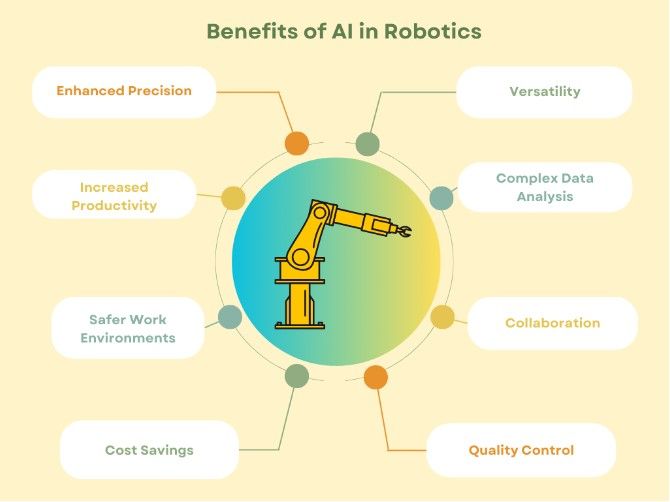
The AI robotics industry is achieving remarkable growth, highlighted by a record 517,385 new robotic installations globally in 2021. This surge reflects a shift towards automated manufacturing. Particularly in Asia, over 74% of these installations are improving manufacturing capabilities. Countries like China are leading this transformation.
The industry’s expansion is also evident in manufacturing robot density. On average, there are now 141 robots per 10,000 employees. This increase points to a growing reliance on robotics for productivity and precision.
While AI-powered robots offer numerous benefits, it’s also crucial to consider the challenges in their integration and deployment.
Challenges in AI-Powered Robotics
Incorporating AI in the field of robotics involves several aspects. Firstly, there’s the technical complexity of making robots smart with AI. This process requires a deep understanding of both AI and robotic systems, ensuring that the robots are not just automated but also intelligent and capable of learning and adapting. Secondly, ensuring these smart robots operate safely alongside humans is paramount to prevent accidents. This involves developing sophisticated algorithms and safety protocols to prevent accidents and ensure smooth, collaborative interactions between humans and robots. This safety aspect is crucial for preventing physical harm and building trust in AI among users and operators.
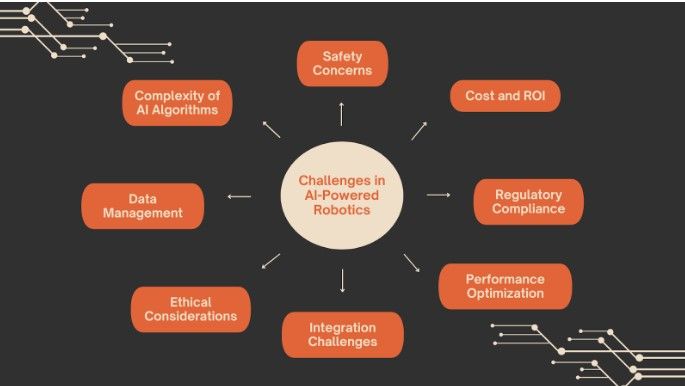
Developing AI capabilities for robots can be expensive. Additionally, managing the vast amount of data that robots rely on raises concerns about privacy and security. This financial barrier can limit the adoption of advanced robotics in certain industries, particularly those with limited resources. Furthermore, these robots generate and process vast amounts of data, leading to concerns about data privacy and security. Ensuring this data is handled securely and ethically is paramount. In sectors like healthcare and defence, where the stakes are exceptionally high, ethical considerations are especially critical.
Lastly, adhering to evolving regulations and standards in robotics and AI is a complex and continuous challenge. As technology advances, regulatory bodies frequently update standards for safety, ethical use, and data protection. This adherence is not just a legal obligation but also plays a crucial role in maintaining public trust and ensuring the responsible development of AI and robotics.
Overcoming the various hurdles in AI and robotics is essential for realising the full potential of this technology. Successfully navigating these challenges will enable broader and more effective deployment of AI-driven robotics. This advancement is key to unlocking innovative solutions and applications in numerous industries, significantly improving efficiency, safety, and productivity.
Tailored Software Solutions: Meeting Challenges with Innovation
At TechnoLynx, we specialise in delivering custom, innovative solutions, specifically tailored to the challenges posed by AI in robotics. We understand the intricacies of integrating AI into robotic systems. Our expertise covers enhancing AI capabilities, ensuring safety in human-robot interactions, managing and analysing extensive data sets, and addressing ethical considerations.
We offer precise software solutions, designed to empower AI-driven robots across various industries. Our commitment to innovation drives us to adapt to the ever-evolving AI in robotics landscape. We provide cutting-edge solutions that boost efficiency, accuracy, and productivity in this dynamic field.
Conclusion
AI in robots is not just a futuristic concept but a present-day reality. From surgical robots in healthcare to autonomous mobile robots in logistics and industrial robots in manufacturing, AI’s integration in robotics is creating waves. However, with such rapid high-tech advancement comes challenges. Navigating these challenges requires expertise and innovative solutions, which is where TechnoLynx comes into play.
At TechnoLynx, cutting-edge solutions are crafted to meet the specific needs of AI in robotics.
We understand the transformative power of AI in robotics and the challenges it brings. If your business or organisation is eager to harness this power and navigate these complexities, we are here to offer a pathway to tailored, effective solutions. Visit us at TechnoLynx and explore how our innovative solutions can propel your operations into the future.
Sources for the images:
- Gaines, J. (2022). Smithsonian magazine
- Kelechava, B. (2019). ANSI
- Kumar, A. (2020). Control Automation
- Teradyne. (2023). Autonomous Mobile Robots
- Thormundsson, B. (2023). Statista
Related Posts
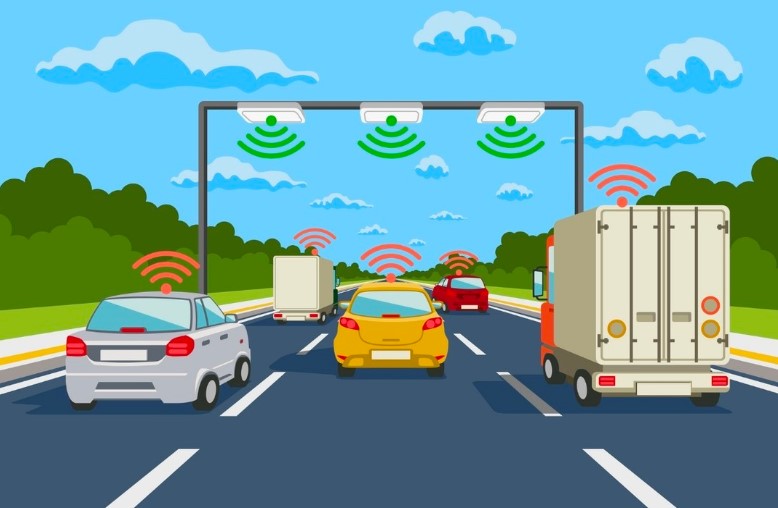
Reinventing Pathfinding with AI-Driven Navigation Systems
26/01/2024
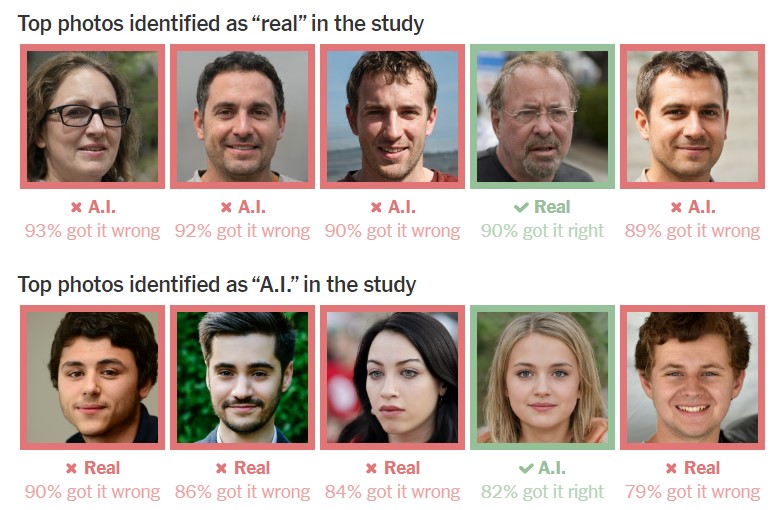
AI Faces vs Real: Test Your Judgment in this Image Quiz Challenge!
23/01/2024

How the Food Industry is Reconfigured by AI and Edge Computing
23/01/2024

Propelling Aerospace to New Heights with AI - now available on Medium.com!
22/01/2024

The AI Exoskeleton for Superhuman Feats
19/01/2024
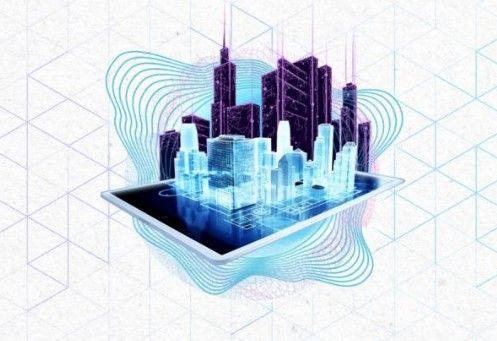
The Practical Impact of Generative AI on Real Estate
13/12/2023

AI image generator that creates pictures up to 16x higher resolution
11/12/2023

The Future of Generative AI
1/12/2023
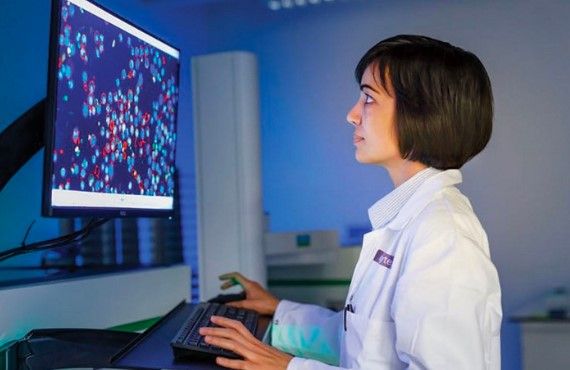
Generative AI: Transforming Industries - Now on Medium!
27/11/2023
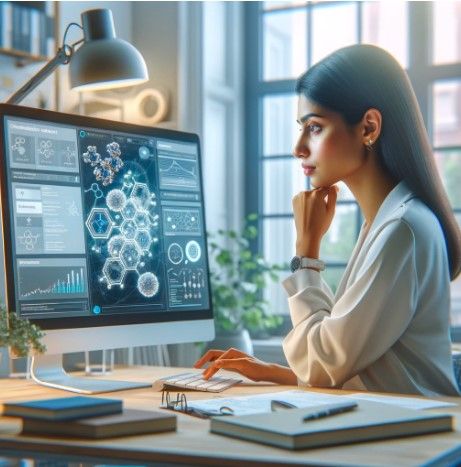
Generative AI: Transforming Industries with AI-Generated Content
21/11/2023